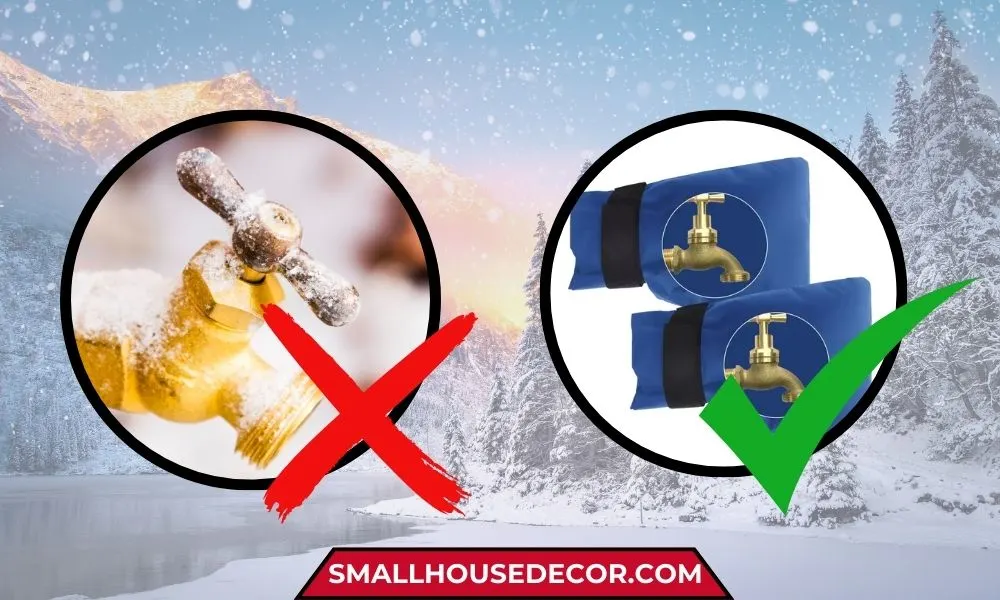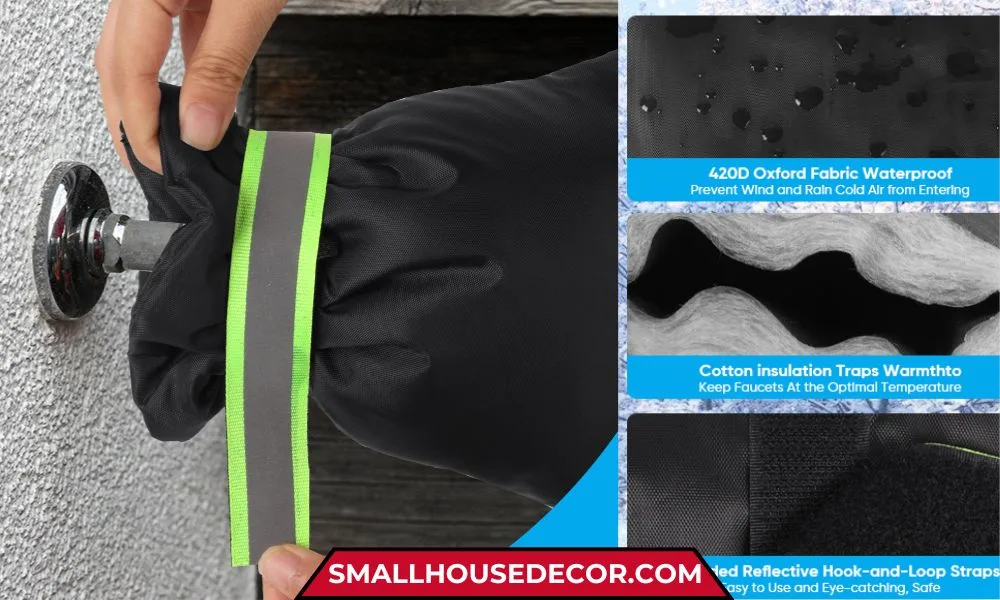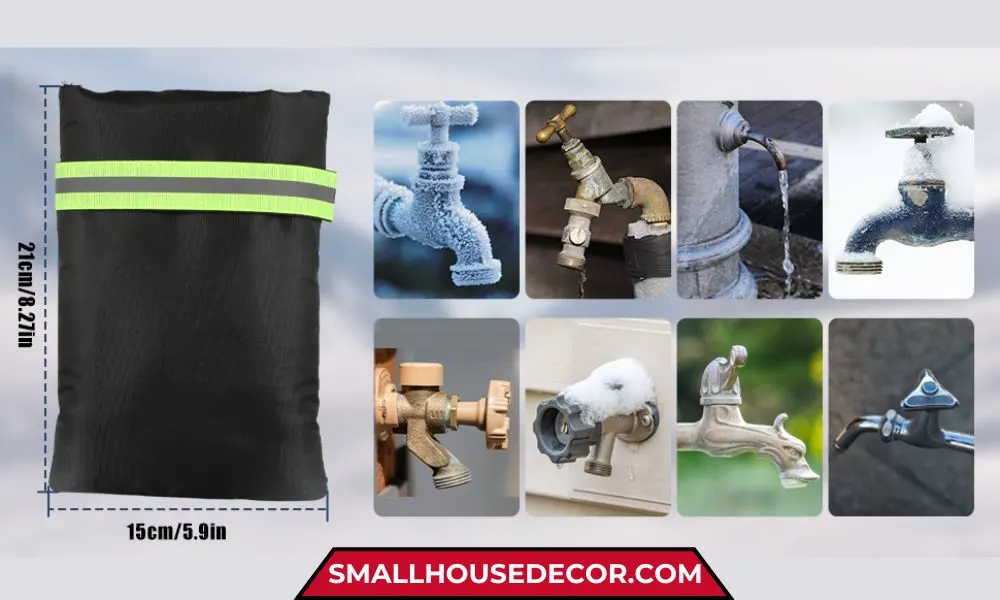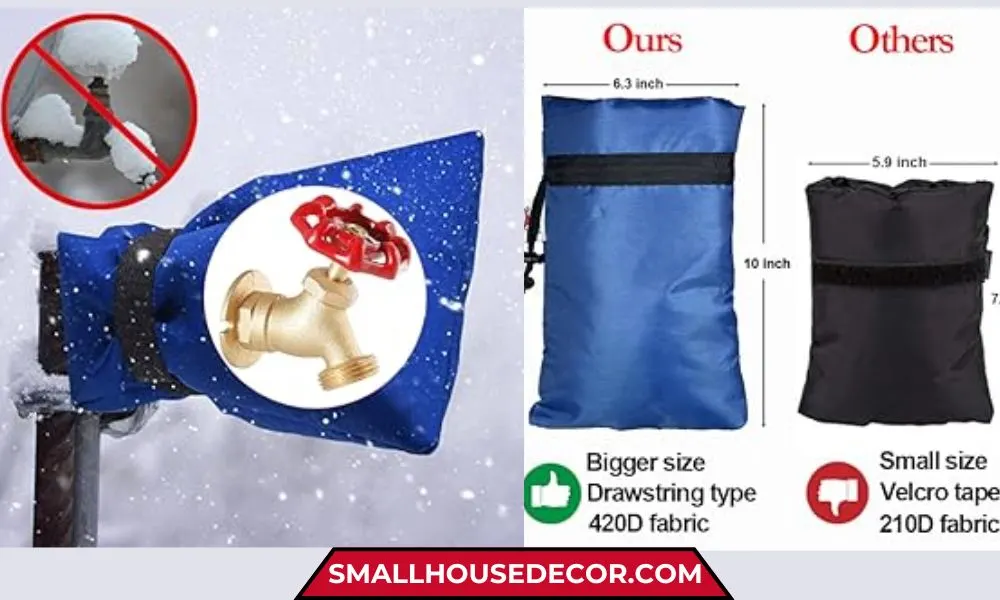Protecting your outdoor faucets during winter is crucial to prevent costly damage from freezing pipes. This guide goes beyond basic faucet covers, offering advanced techniques for comprehensive protection.

Do Faucet Covers Work?
Okay, so the question is, do these faucet covers actually work? I mean, it’s just a little foam or fabric thing, right? Well, let’s think about the science. It’s all about insulation.
These covers create a barrier between the cold outside air and the faucet. They slow down the transfer of heat, which means it takes longer for the faucet to reach freezing temperatures. It’s like wearing a coat – it doesn’t generate heat, but it keeps your body heat from escaping.
The key is that they create an air gap and use insulating materials. Still air is a great insulator, so the air trapped between the faucet and the cover helps to prevent heat loss. The insulating material itself, whether it’s foam, fiberglass, or Thinsulate, further slows down heat transfer.
Guide to Faucet Protection for Winter
Why it Matters? Freezing temperatures can cause water inside pipes and faucets to expand, leading to cracks and bursts. This results in costly repairs and potential water damage to your home.
Winterizing Your Outdoor Faucets: A Step-by-Step Guide
1. Shut Off the Water Supply:
To prevent water from freezing inside the pipes, you need to shut off the water supply to the outdoor faucet. You’ll find a shut-off valve inside your home, usually on the wall behind the faucet. This valve controls the water flow to the outdoor spigot.
2. Disconnect and Drain Hoses:
Remove the garden hose from the outdoor faucet. To prevent the hose from freezing and cracking, drain all the water from it. You can do this by hanging the hose over a fence or deck, or by extending it and raising one end while moving it back and forth.
3. Drain the Faucet:
Open the outdoor faucet to allow any remaining water inside the pipe to drain completely. This is crucial because any water left in the pipe can freeze and cause the pipe to burst.
4. Close the Faucet:
Once the water has completely drained from the faucet, close it tightly. This prevents cold air from entering the pipe and potentially freezing any remaining water inside.
Pro Tips: While faucet covers are essential, consider insulating exposed pipes leading to the faucet as well. Pipe insulation sleeves or heat tape can provide additional protection.
Also Read: Wondering if dripping faucets help during freezing temperatures? Check out dripping faucets myths to separate fact from fiction and ensure your winterproofing methods are effective.
Faucet Cover Reviews: Top Picks to Keep Your Outdoor Faucets Protected
Not all faucet covers are created equal—discover the best options for insulation, durability, and ease of installation to safeguard your home from freezing temperatures and unexpected damage.
Hometopia Outdoor Faucet Cover | 7.1”W x 9.8”H

This “Pro” series faucet cover is designed for maximum winter protection, featuring larger dimensions (7.1”W x 9.8”H) to accommodate various faucet sizes, including those with backflow preventers.
Constructed with waterproof materials and robust insulation, it aims to provide a strong defense against freezing temperatures, particularly in harsh winter climates.
PROS
CONS
Best Seller,30K+ bought in past month
We earn a commission if you make a purchase, at no additional cost to you.
Overall: A solid choice for homeowners needing extra protection or those with larger or non-standard faucet setups. Ideal for areas with harsh winters.
Nabreeli Outdoor Faucet Covers | 8.5″x5.9″x1.9″

This two-pack offers a cost-effective solution for protecting multiple standard-sized outdoor faucets. Each cover measures 8.5″x5.9″x1.9″ and features “thicker” insulation for enhanced freeze protection. Reflective strips are included for increased visibility in low-light conditions.
PROS
CONS
Best Seller,7K+ bought in past month
We earn a commission if you make a purchase, at no additional cost to you.
Overall: A great option for homeowners looking for a simple, affordable, and effective way to protect standard-sized outdoor faucets. The reflective strips are a welcome safety addition. However, ensure your faucets are within the size range for optimal performance.
DEMEDO Enlarge Outdoor Faucet Cover

This product offers enhanced winter protection for outdoor faucets using 3M Thinsulate insulation, known for its superior thermal properties. The enlarged dimensions (10″H x 6.3″W) provide ample coverage for larger faucets and wall taps.
These faucet socks are designed to be waterproof and frost-free, offering reliable protection against freezing temperatures. The product comes as a two-pack in blue.
PROS
CONS
Best Seller,3K+ bought in past month
We earn a commission if you make a purchase, at no additional cost to you.
Overall: A premium option for those living in areas with extremely harsh winters or those with larger or non-standard faucet setups, especially wall taps.
The 3M Thinsulate insulation provides top-tier protection against freezing. However, the higher cost and larger size might not be necessary for everyone. Consider your specific climate and faucet size before purchasing
Winter Prep Across the U.S – Do You Really Need Faucet Covers?
Faucet covers are a simple but effective way to protect outdoor faucets from freezing temperatures, and they are especially important in certain parts of the US. Here’s a breakdown from different perspectives:
Northeast (e.g., Maine, Vermont):
- Need: Absolutely essential. Winters are long, with consistently below-freezing temperatures and heavy snowfall.
- Perspective: “Here in Maine, if you don’t cover your faucets, you’re asking for trouble. We’ve seen pipes burst from the ice, causing major water damage. A faucet cover is a no-brainer, it’s cheap insurance.”
Midwest (e.g., Minnesota, North Dakota):
- Need: Highly recommended. While not as consistently cold as the Northeast, the Midwest experiences extreme cold snaps and blizzards.
- Perspective: “We get some brutal winters in Minnesota. Faucet covers are part of our fall routine, along with disconnecting hoses and shutting off the inside valves. It’s just part of being prepared for winter.”
South (e.g., Texas, Florida):
- Need: Less critical, but still beneficial in some areas. While temperatures rarely stay below freezing for extended periods, occasional freezes can occur.
- Perspective (Texas): “We don’t usually worry too much about freezing, but that one winter storm a few years back taught everyone a lesson. Now, I keep a couple of faucet covers on hand just in case.”
- Perspective (Florida): “Freezing is rare here, but it can happen. Mostly, I use faucet covers to keep bugs and dirt out of the faucet.”
West (e.g., Colorado, California):
- Need: Varies greatly depending on elevation and specific location. Mountain areas experience harsh winters, while coastal regions have milder temperatures.
- Perspective (Colorado): “In the mountains, faucet covers are a must. We get a lot of snow and freezing temperatures. It’s important to protect your pipes, especially if you have a vacation home that’s not always heated.”
- Perspective (California): “In Southern California, we rarely need them for freezing, but they can help protect the faucets from sun damage and keep them clean.”
General Consensus:
- Faucet covers are a low-cost, easy-to-install solution that can prevent costly damage from burst pipes.
- Their effectiveness is increased when combined with other winterizing measures, such as draining the faucet and shutting off the inside water valve.
- Even in warmer climates, faucet covers can offer benefits like protection from sun damage and keeping the faucet clean.
Also Read: Planning to upgrade your indoor fixtures for a complete plumbing check? Learn more about choosing a bathroom faucet to find a stylish and functional option for your space.
Conclusion:
So, yes, faucet covers do work. They’re not a foolproof solution on their own, especially in extreme cold, but they’re a crucial part of a comprehensive winterizing strategy.
When used in conjunction with shutting off the inside water valve, draining the faucet, and insulating pipes, they significantly reduce the risk of freezing and costly repairs.
Source: